Recce Pharmaceuticals Provides Additional Positive Update on Patients Treated Under “Special Access Scheme”
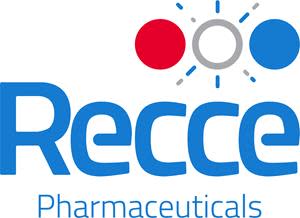

Figure 1
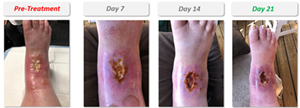

Figure 2
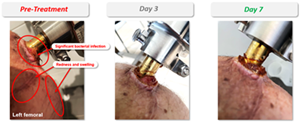

Figure 3
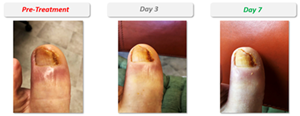

RECCE® 327 as a gel formulation (R327G) demonstrated a positive clinical response in the treatment of multiple antibiotic-resistant infections under the Therapeutic Goods Administration (TGA) Special Access Scheme (SAS) Category A
Five total patients treated with R327G under the TGA SAS Category responded well to treatment with complete eradication of antibiotic-resistant infections
Clinical trial preparations are underway for the use of R327G as a topical application
SYDNEY, Australia, Sept. 01, 2023 (GLOBE NEWSWIRE) -- Recce Pharmaceuticals Ltd (ASX: RCE, FSE: R9Q), (the Company) developing a new class of synthetic anti-infectives, is pleased to report further patient case studies utilizing its lead anti-infective candidate, RECCE® 327, as a gel formulation, or RECCE® 327 Gel (R327G), by a qualified medical practitioner in patients with antibiotic-resistant Gram-positive and Gram-negative bacterial infections under the Therapeutic Goods Administration (TGA) Special Access Scheme (SAS) Category A, a compassionate-use provision.
“We are thrilled to see R327G having a real-life impact with patients, especially those not responding to commonly used antibiotics thanks to the TGA’s special access scheme,” said James Graham, Chief Executive Officer of Recce Pharmaceuticals. “We look forward to building upon these successes among the present and future clinical trials ahead.”
Patients have been treated under the SAS-Category A, a notification pathway that health practitioners can access on behalf of a prescribing medical practitioner for patients who are seriously ill with a condition from which death is likely to occur within a matter of months or from which premature death is expected to occur in the absence of early treatment and does not constitute a clinical trial.1
R327G is an experimental compound, not market-approved for use in humans, with safety and efficacy to be determined by current clinical studies. The results shown below must be considered anecdotal; however, they are presented in the interest of continuous disclosure obligations and are not part of any current clinical trials.
Patient Case Study Example C
A 51-year-old female with a significant wound infection following an ankle infusion surgery was diagnosed with arthritis in her right ankle due to talar avascular necrosis, which is the death of bone tissue from lack of blood supply.2
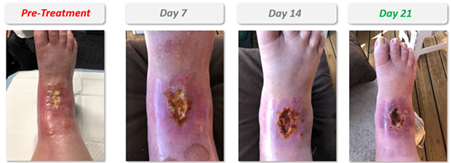
A pre-treatment wound swab on day 0 showed a growing culture of Gram-positive and Gram-negative bacilli, a deadly pathogen that produces spores that can survive in environments for many years.3 Patient A’s slow-healing wound was unresponsive for 5-6 weeks to two widely used antibiotics globally4 for bacterial infections – Augmentin (Amoxicillin) and Keflex (Cefalexin).
On Day 7, following treatment with R327G, the initial redness and swelling of the wound had minimized and was found to be drying up. On day 14, there were no signs of bacterial growth surrounding the wound, and on day 21, it had successfully healed, closed, and dried up with no signs of bacterial infection. R327G treatment was shown to be well-tolerated when applied daily.
Patient Case Study Example D
A 51-year-old male involved in a motorbike accident in 2017 was required to have an amputation above the knee. In 2018, the patient received osseointegration, a bone ingrowth metal implant, had a recurrent infection on the left femoral (thigh), and was not responding to oral and intravenous antibiotics.
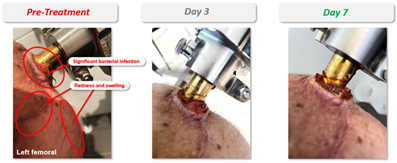
Prior to treatment with R327G, the patient showed significant bacterial infection, redness, and swelling around the implant in the upper left thigh. Three days after applying R327G, the initial redness and swelling had minimized, with the wound healing and drying up. On day 14, the wound dried up and had improved with no signs of redness or swelling. When applied daily, R327G treatment was shown to be well tolerated.
Patient Case Study Example E
An 84-year-old male with osteomyelitis, a serious infection of the bone, on his left big great toe, was not responding to antibiotics.
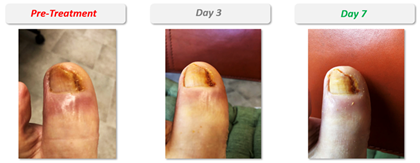
On day 1, pre-treatment X-rays showed an infection deep within the underlying bone, tissue, and around the nail, with signs of initial biofilm formation. After three days of R327G treatment, the wound dried up with the infection clearing, and the toe responded well to treatment. On day 7, the wound completely dried up, with no signs of biofilm surrounding the toenail, and swelling had significantly reduced. Surgical intervention was averted, such as limb amputation, which is common in patients with diabetes.
About Recce Pharmaceuticals Ltd
Recce Pharmaceuticals Ltd (ASX: RCE, FSE: R9Q) is developing a New Class of Synthetic Anti-Infectives designed to address the urgent global health problems of antibiotic-resistant superbugs and emerging viral pathogens.
Recce’s anti-infective pipeline includes three patented, broad-spectrum, synthetic polymer anti-infectives: RECCE® 327 as an intravenous and topical therapy that is being developed for the treatment of serious and potentially life-threatening infections due to Gram-positive and Gram-negative bacteria including their superbug forms; RECCE® 435 as an orally administered therapy for bacterial infections; and RECCE® 529 for viral infections. Through their multi-layered mechanisms of action, Recce’s anti-infectives have the potential to overcome the hypercellular mutation of bacteria and viruses – the challenge of all existing antibiotics to date.
The FDA has awarded RECCE® 327 Qualified Infectious Disease Product designation under the Generating Antibiotic Initiatives Now (GAIN) Act – labelling it for Fast Track Designation, plus 10 years of market exclusivity post approval. Further to this designation, RECCE® 327 has been included on The Pew Charitable Trusts Global New Antibiotics in Development Pipeline as the world’s only synthetic polymer and sepsis drug candidate in development. RECCE® 327 is not yet market approved for use in humans with further clinical testing required to fully evaluate safety and efficacy.
Recce wholly owns its automated manufacturing, which is supporting present clinical trials. Recce’s anti-infective pipeline seeks to exploit the unique capabilities of its technologies targeting synergistic, unmet medical needs.
Corporate Contact
James Graham
Recce Pharmaceuticals Ltd
+61 (02) 9256 2571
James.graham@recce.com.au
Media & Investor Relations (AU)
Andrew Geddes
CityPR
+61 (02) 9267 4511
ageddes@citypublicrelations.com.au
Media (USA)
Jordyn Temperato
LifeSci Communications
jtemperato@lifescicomms.com
Investor Relations (USA & EU)
Guillame van Renterghem
LifeSci Advisors
gvanrenterghem@lifesciadvisors.com
1 https://www.tga.gov.au/sites/default/files/special-access-scheme-guidance-for-health-practitioners-and-sponsors.pdf
2 https://www.mayoclinic.org/diseases-conditions/avascular-necrosis/symptoms-causes/syc-20369859
3 https://www.ncbi.nlm.nih.gov/books/NBK470553/
4 https://www.ncbi.nlm.nih.gov/books/NBK538164/
Photos accompanying this announcement are available at:
https://www.globenewswire.com/NewsRoom/AttachmentNg/44d624e9-07c6-4418-a66e-77e5426eb0e4
https://www.globenewswire.com/NewsRoom/AttachmentNg/b171e4e6-6e63-419f-89a3-21b7e7d18a62
https://www.globenewswire.com/NewsRoom/AttachmentNg/d9c9317d-b059-4ae1-8bd0-6f15da8e00b1

